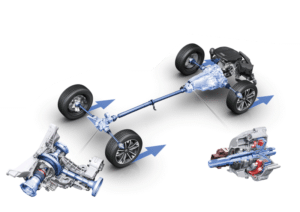
Automobile braking system and accessories in-depth analysis
Among the many systems of a car, the braking system is undoubtedly a crucial component. It not only affects the driving safety
Automobile window regulators play a crucial role in the functionality of a vehicle, allowing passengers to easily control the opening and closing of their windows. Over the years, window regulators have evolved significantly, from manual crank handles to modern electronic systems. In this article, we will explore the history, development, and advancements in automotive window regulators.
The first automotive window regulators were manual crank handles, which required passengers to physically turn a handle to raise or lower the window. This simple mechanism was widely used in early automobiles and remained popular for many years. However, manual window regulators had several limitations, including the effort required to operate them and the lack of precise control over the window position.
In the 1950s, power window regulators were introduced to the automotive industry, revolutionizing the way windows were controlled in vehicles. Power window regulators used electric motors to automate the process of raising and lowering windows, providing passengers with greater convenience and ease of use. This advancement in technology made operating windows in a vehicle effortless, and soon became a standard feature in luxury vehicles.
In recent years, electronic window regulators have become increasingly popular in modern vehicles. These advanced systems utilize electronic control units (ECUs) and sensors to regulate the movement of windows, allowing for more precise control and customization options. Electronic window regulators can be programmed to automatically open or close windows, adjust window position based on external factors such as temperature or rain, and integrate with other vehicle systems for enhanced functionality.
The latest innovation in automotive window regulators is the development of smart window regulators, which are equipped with intelligent features and connectivity options. Smart window regulators can be controlled remotely through a smartphone app, allowing passengers to operate their windows from a distance. These systems can also be integrated with voice control assistants, such as Amazon Alexa or Google Assistant, to provide hands-free operation of windows.
As automotive technology continues to advance, we can expect to see further enhancements in window regulator systems. Some of the potential future trends include the integration of biometric sensors for personalized window settings, the adoption of advanced materials for lighter and more durable regulators, and the development of self-cleaning or self-repairing window mechanisms. Additionally, the integration of window regulators with autonomous driving systems may provide new opportunities for enhanced passenger comfort and safety.
The evolution of automotive window regulators from manual crank handles to smart, electronic systems has transformed the way we interact with windows in vehicles. With advancements in technology and innovation, window regulators have become more convenient, efficient, and user-friendly. As we look towards the future, the possibilities for further enhancements in automotive window regulators are endless, promising a more seamless and integrated experience for passengers in vehicles.

Among the many systems of a car, the braking system is undoubtedly a crucial component. It not only affects the driving safety

In the long history of the automobile industry, the transmission system plays a vital role as a bridge connecting the engine and

In the long history of the automobile industry, the engine is the heart of the car, and its performance directly determines the